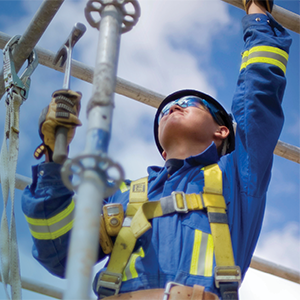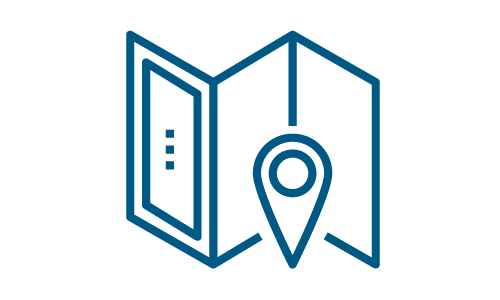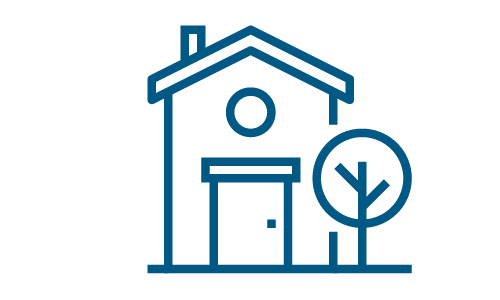Overview
Building Forward: Alberta's 20-Year Strategic Capital Plan provides a blueprint for long-term infrastructure investment and development.
It examines the possible impacts of global trends and provides a transparent and strategic direction to guide how government invests in planning, constructing, renewing and maintaining infrastructure over the long-term.
The 20-Year Strategic Capital Plan supports Alberta’s Recovery Plan by focusing infrastructure planning on supporting jobs, growing communities, boosting economies, and helping ensure Alberta remains a world-class destination for people to live, work and raise a family.
Key objectives and guiding strategies
-
 Key strategic objectives
Key strategic objectivesBuilding Forward is designed with 4 major objectives for provincial investment in infrastructure over the next 20 years.
Achieving these objectives makes it possible for our province to realize success on many fronts.
-
We must strike a balance between infrastructure needs, strategic investment in infrastructure, and the responsibility for careful management of financial resources.
This means making strategic investments in core infrastructure that will improve Alberta’s competitiveness and productivity, and support priority areas, such as health care, education, and job creation, while also ensuring that government stays within its means.
-
A robust and diversified economy generates wealth for individuals, businesses, and organizations.
This helps support charitable giving in communities and provides revenue for important public services, such as health and well-being, education and justice.
-
A strong job market offers well-paying opportunities for Albertans across a variety of industries, sectors and skill sets. It enables the development of stronger families and communities, supporting Albertans to lead fulfilling lives.
Infrastructure projects allow for the continuous support of jobs that directly support our economy.
-
A climate of innovation supports the development, adoption and use of new technology, and encourages new ways of thinking and doing.
Innovation helps our province become more productive and competitive, improve environmental performance, create safer and more resilient communities, attract investment and provide a higher quality of life for all Albertans.
-
 Guiding strategies
Guiding strategiesTo help achieve its 4 major objectives, Building Forward identifies 6 guiding strategies for capital investment.
These guiding strategies will inform how we plan for capital investments into the future and help infrastructure development keep pace with the needs of Albertans.
-
Services are shifting to become ever more inclusive and accessible, with the aim of personalizing the client experience to the extent possible. The infrastructure being used to deliver client services must support the needs of diverse individuals and communities.
With new technologies making this more feasible and cost-effective to do, there are opportunities to bring this approach into the delivery of public services and infrastructure.
-
Aggressively pursuing technological innovation, broadband connectivity, and a broader shift toward data and digital tools, will enable Alberta to develop infrastructure that can support a growing knowledge economy, innovation ecosystem, and government modernization, as well as improve the lives and livelihoods of Albertans.
By taking advantage of Alberta's growing artificial intelligence (AI) ecosystem and other transformational technology, as well as expanding virtual service delivery, we can make capital budgets go further and realize savings for taxpayers.
-
Public capital investments can play a powerful role in attracting private investments, helping to spur job creation, economic activity, and innovation. With preferred business tax rates, a vastly improved regulatory environment, a low cost of living, and world-class infrastructure, Alberta offers an incredible value proposition to attract investment.
We will prioritize capital investments that will attract private investment and enhance Alberta’s competitive advantage.
-
The concept of "going it alone" on major capital projects is undesirable and, in many cases, financially infeasible. Leveraging the wide range of expertise, knowledge, and infrastructure from partners across sectors encourages innovation and appropriate risk sharing, ultimately leading to better outcomes. Partnerships may involve building on existing collaborations and securing financial fairness and involvement with other orders of government.
This means exploring creative ways of working with partners to ensure the right type of infrastructure is in the right place at the right time, while addressing diverse and evolving needs. Key partners include municipal governments, other provincial and territorial governments, the federal government, the private sector, Indigenous communities and non-profit organizations.
-
Regular and strategic investments in capital maintenance and renewal are critical to ensure that existing capital assets are most effectively maintained and renewed to realize the most value. This means proactively addressing problems to extend the life and performance of capital assets and prioritizing capital maintenance and renewal for areas of greatest need.
Assessing the full life cycle costs of capital investments, and right-sizing our province’s existing capital assets will be key actions.
-
Capital assets in Alberta will need to be constructed to withstand decades of use, change, and exposure to weather extremes. Integrating resiliency and sustainability into all public capital assets will help build future-focused infrastructure and guard against risks presented by floods and wildfires.
This will deliver better value for Alberta taxpayers and lead to better social, economic, and environmental outcomes through conservation of sustainable materials, lower emissions, more efficient energy use and reduced water needs.
Trends
The following trends are likely to impact how Alberta evolves over the next 20 years and can be expected to significantly influence how we invest in capital infrastructure.
Aging and more diverse population
Continued urbanization
Shift to the virtual realm
Affordability constraints
Rise in artificial intelligence (AI) and other transformational technologies
People-centered service expectations
Maintenance of aging infrastructure
Fewer silos and more integration
The need for sustainability and resilience
International volatility
Key sectors
Building Forward highlights several key sectors and provides insight on potential future trends impacting these sectors over the next few decades.
The plan also explores approaches and opportunities to respond to these trends.
-
 Health care
Health careWith the largest provincewide, fully-integrated health system in Canada, Alberta is uniquely positioned to lead the way in delivering better health outcomes.
This sector explores the impacts of shifting population projections on Alberta’s future health-care system, as well as key considerations necessary to adopt virtual service delivery, innovation in care models, and advancing health technologies.
-
 Post-secondary education
Post-secondary educationPost-secondary institutions play crucial roles in stimulating economic growth and innovation in our province and preparing Albertans for the jobs of today and tomorrow. Long-term strategic planning and investment in our post-secondary institutions plays a significant role in our ability to educate and train Albertans and adapt to future trends.
This sector explores institutional-industry partnerships and new platforms for collaboration, the changing demands of lifelong learners, and the integration of technology and digital literacy in our post-secondary classrooms (through in-person and remote learning). It also considers the research and innovation that solves the biggest societal challenges and drives economic growth.
-
 Energy and minerals
Energy and mineralsEnergy and minerals is one of Alberta’s most critical sectors. It has been a driver of tremendous economic growth, innovation, and job creation, and with Alberta’s vast energy and mineral resources and new technologies, will continue to be well into the future.
This sector explores opportunities and approaches to a number of trends poised to impact the energy and mineral sector, including the shift to a low-carbon future, rising global energy demand, and electricity grid modernizations.
-
 Environment and tourism
Environment and tourismPeople from all over the world come to enjoy our mountains, grasslands, badlands, and other natural assets for good reason. The diversity of Alberta’s ecosystems and our outdoor recreation opportunities put our province in a league of its own.
This sector explores approaches and opportunities to respond to extreme weather and adaptation, while also managing the use of our vast landscapes.
-
 Housing and inclusive living
Housing and inclusive livingAlberta’s communities are much more than collections of houses, streets, stores, and utilities. They are the places where friendships are made, families grow together, and neighbours support each other.
This sector explores the impact of integrated, active, and inclusive community design and the supply of affordable housing over the next few decades.
-
 K to 12 education
K to 12 educationInvestments in education pay huge dividends in developing our economy and society.
This sector explores the impacts of new and emerging trends in K to 12 education that are poised to influence the way we build our schools, now and in the future. This includes the emergence of new learning styles, challenges around demographic changes, the rise of remote learning, and the use of schools as community hubs.
-
 Transportation
TransportationTransportation plays a critical role in Alberta’s economy, and our transportation assets are powerful catalysts for stimulating growth.
This sector explores major trends impacting the future of transportation in Alberta, including self-driving and remote piloted vehicles, maintaining our transportation networks, investing in transportation as a key competitive advantage, and adapting and being inclusive to the changing needs of Albertans.
-
 Agriculture and forestry
Agriculture and forestryAgriculture and forestry are significant industries that are key drivers of Alberta’s economy. As they increasingly adopt technologies and cutting-edge practices, these industries are poised to unleash huge benefits in terms of economic activity, innovation, and job creation.
This sector explores trends in global demand for food and wood resources, the shift toward sustainable and alternative practices, and the adoption of technology.
-
 Community development
Community developmentAlberta’s communities support the high quality of life Albertans enjoy. The way we invest in community, cultural, heritage, and recreational public-use infrastructure will play a significant role in the development of vibrant and lively communities.
This sector explores the changing uses, needs, and consumer demands of individuals in their community space and the impacts of aging community and cultural facilities.
-
 Public safety and justice
Public safety and justiceInvestments in justice and public safety infrastructure are critical to ensuring our communities are safe places to live, work, play, and invest.
The sector explores the impact of shifting to holistic approaches to public safety and justice, policing in a complex climate, and improving access to justice.
How we got here
The Infrastructure Accountability Act legislates the development and regular review of a 20-year strategic capital plan.
Next steps
Building Forward: Alberta's 20-Year Strategic Capital Plan will inform future budget and capital plan decisions. The plan will be updated at least once every 4 years.
News
- Looking ahead to build Alberta (December 16, 2021)
- Increasing accountability for capital project spending (October 25, 2021)
- Input wanted on infrastructure planning (June 22, 2020)